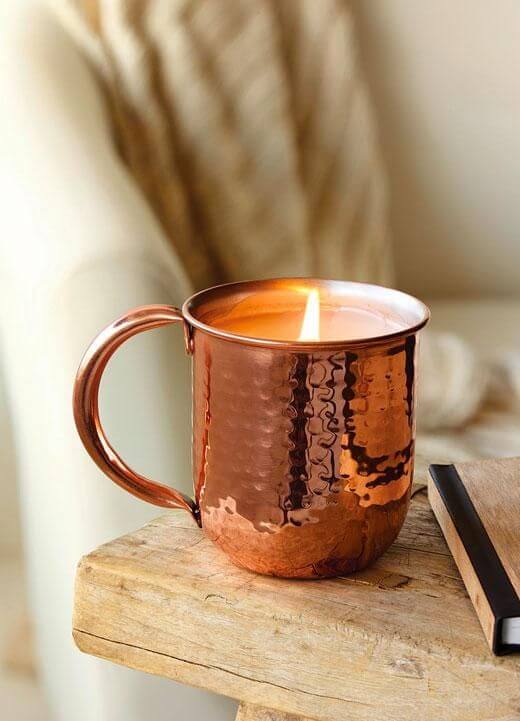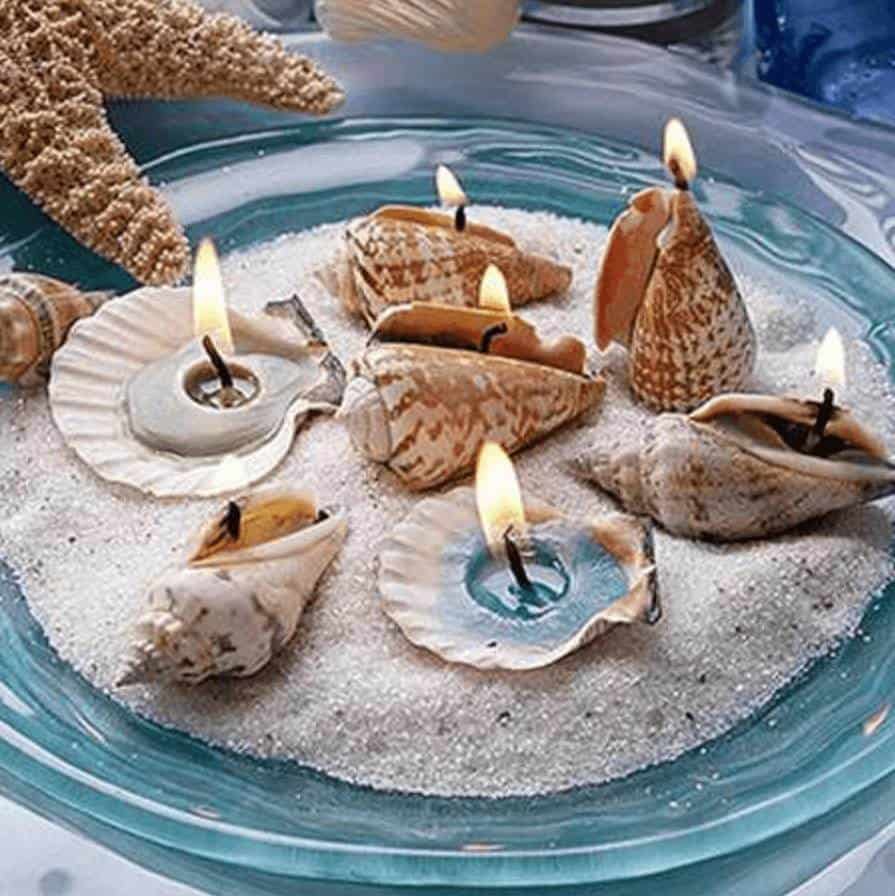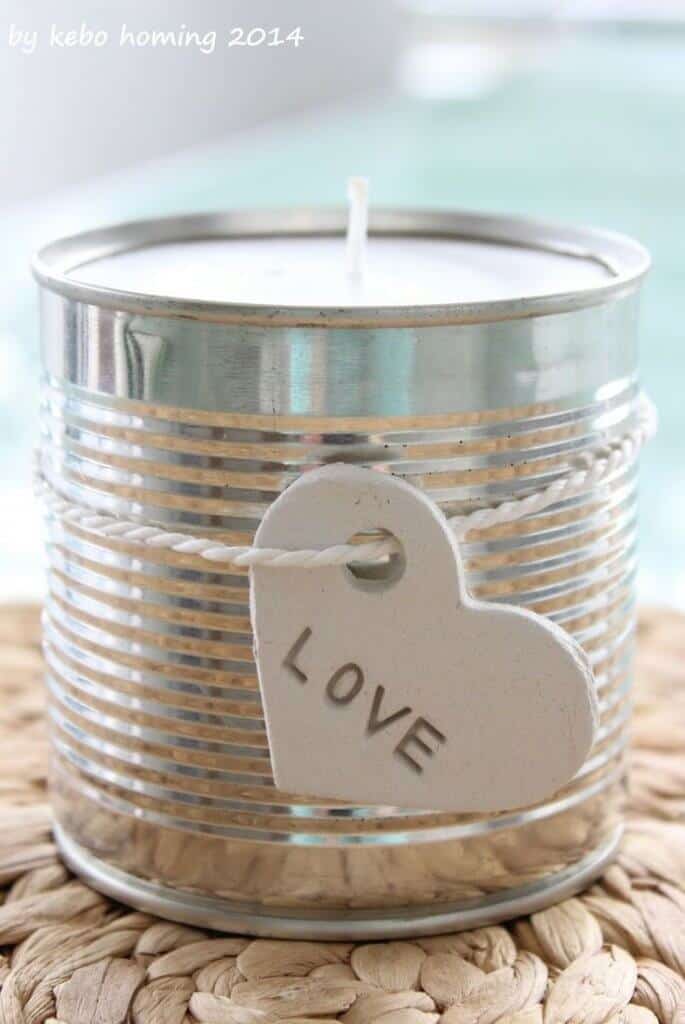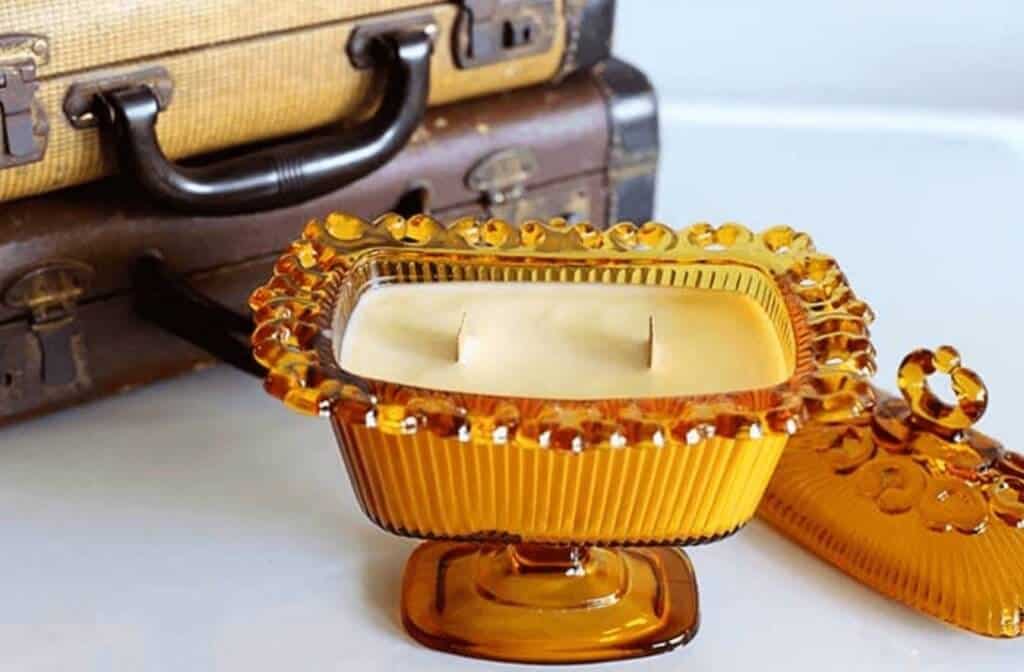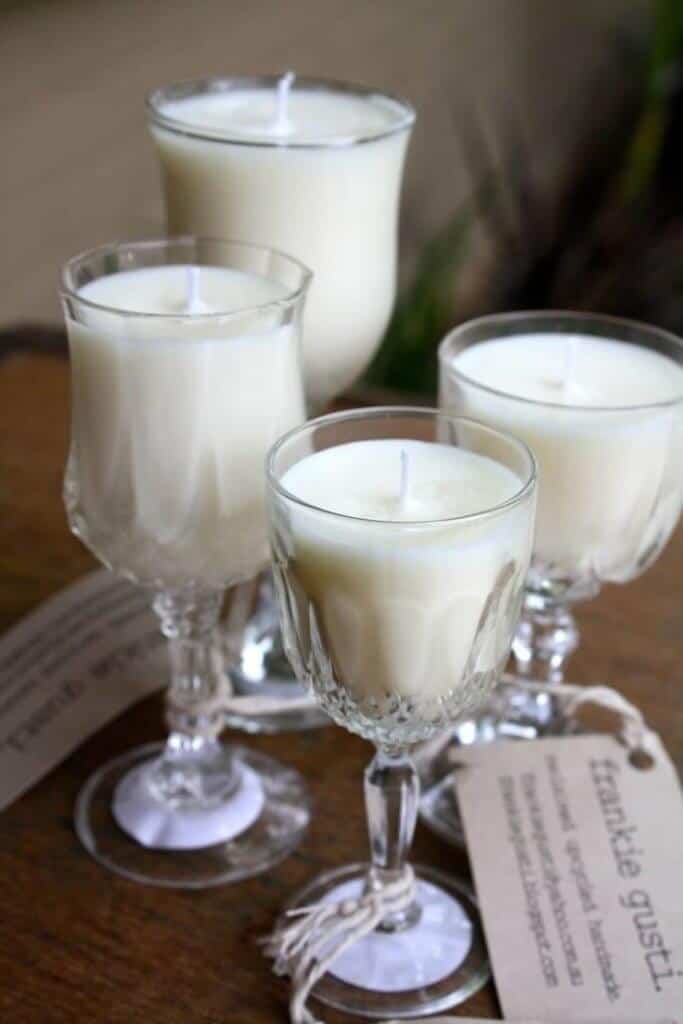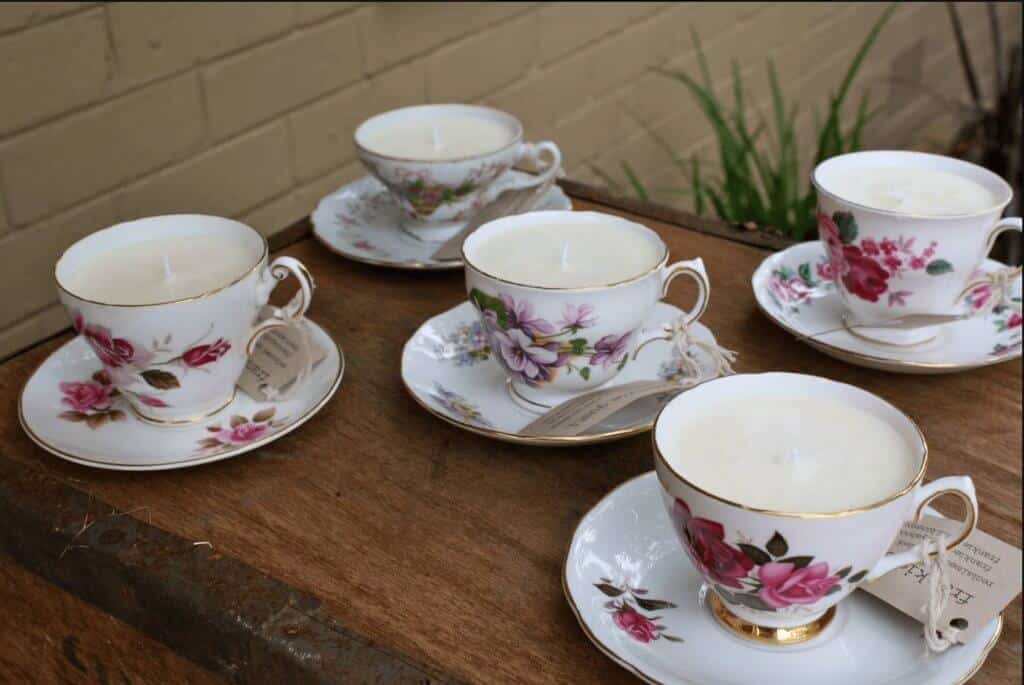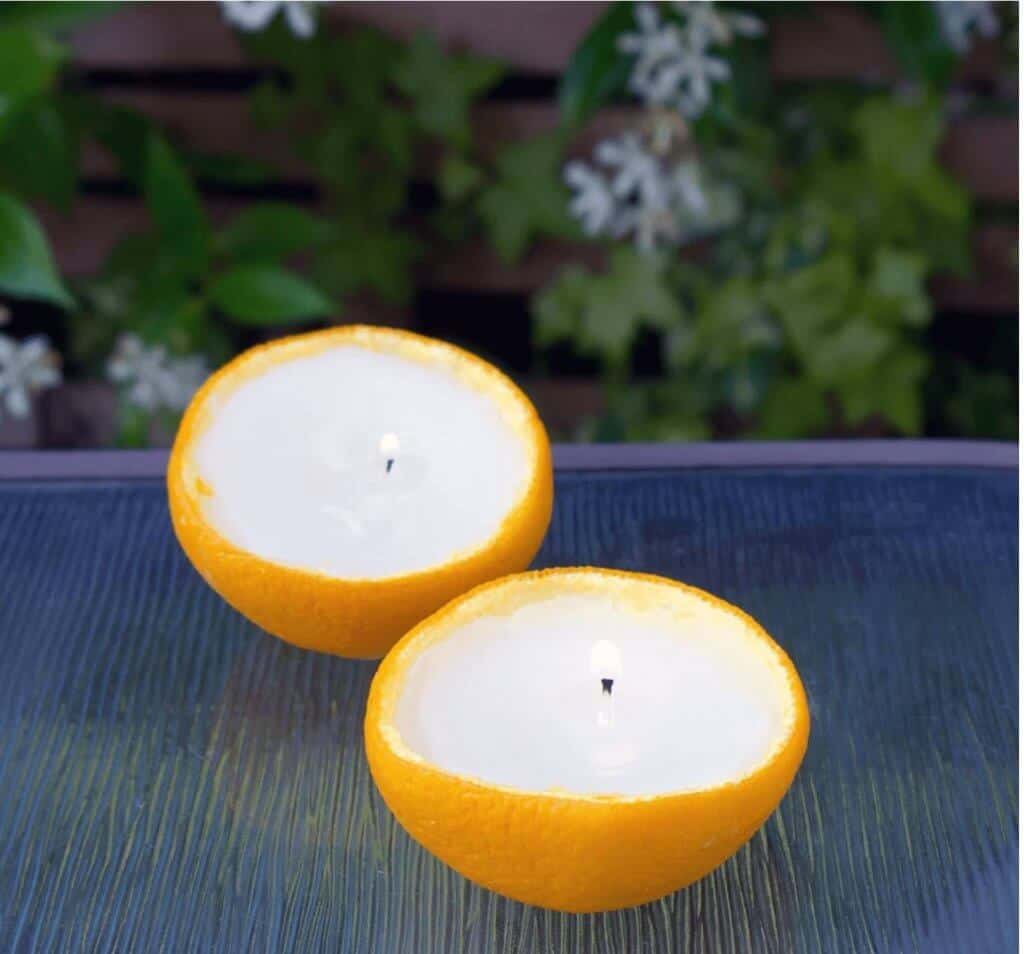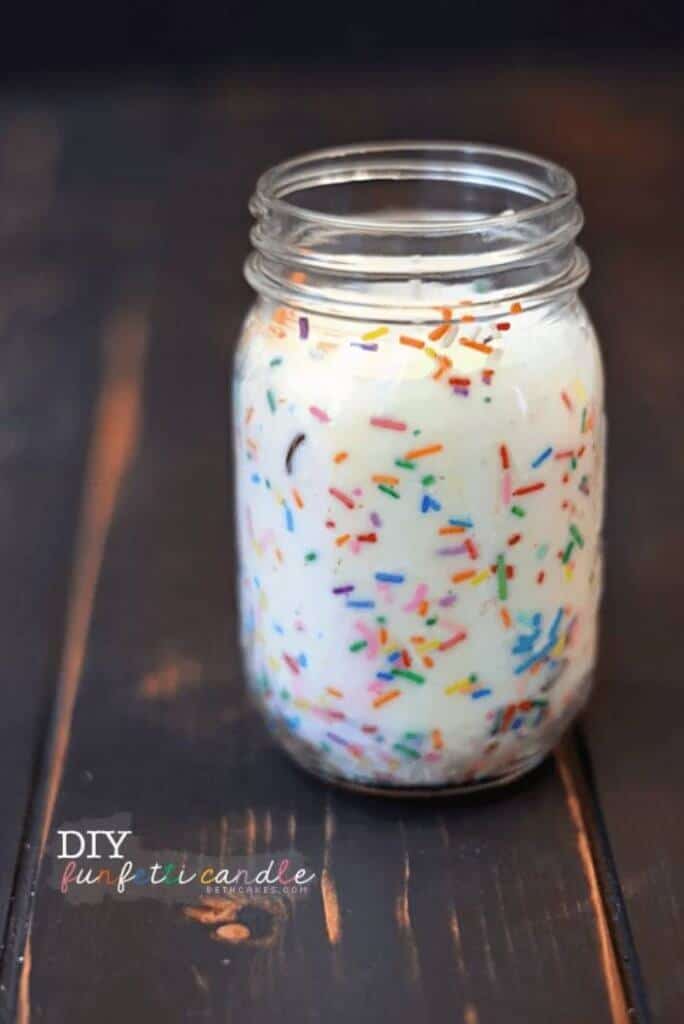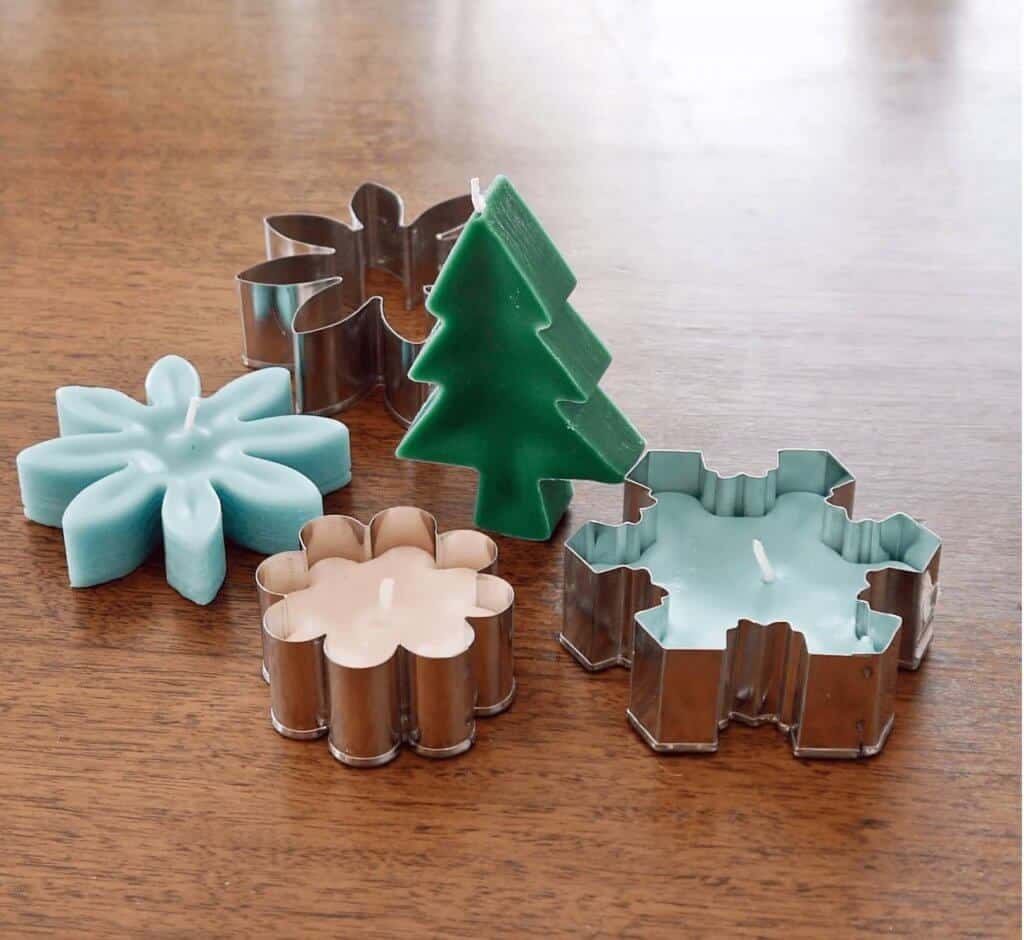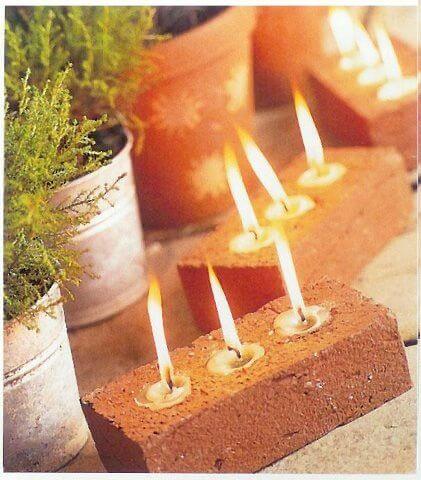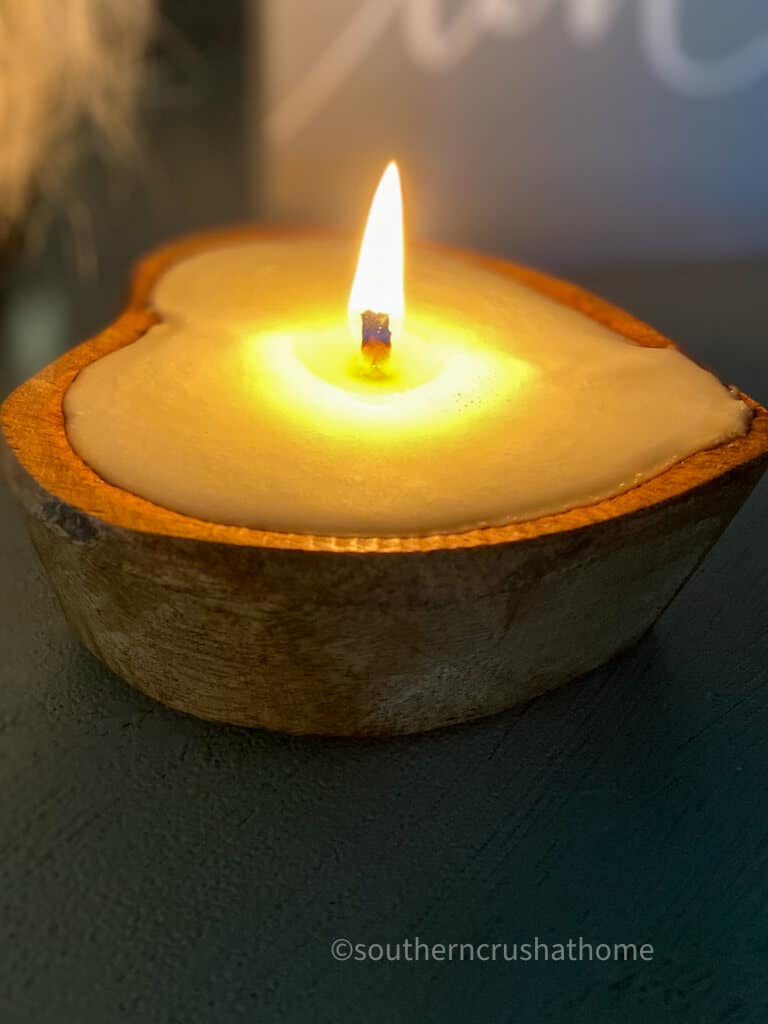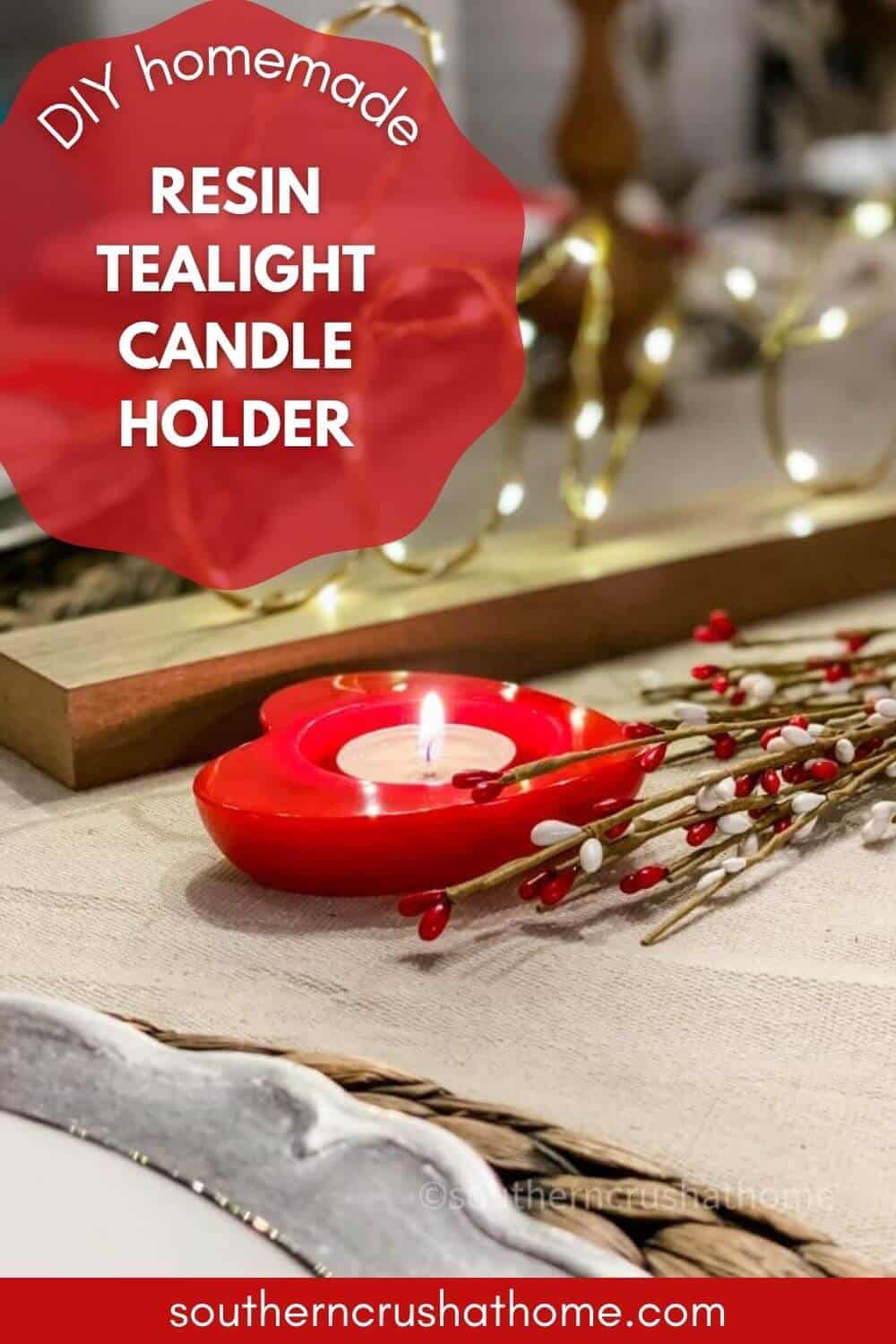Easy Homemade Candle Making Kits for Beginners with Easy to Follow Instructions
Homemade candle-making kits for beginners are an easy way to get started with candle-making. Using a DIY candle-making kit, you’ll have all the candle-making supplies you need to get started, including natural soy wax flakes, candle wicks, glue dots or wick stickers, essential oils, and melting equipment.
Pouring candles at home is a super easy craft, takes very few candle-making supplies, and is so rewarding which makes it one of my favorite crafts!
This blog post contains affiliate links. The opinions are wholly my own from my own experience. I may earn a small commission from clicks through to the websites that end in a purchase.

How to Choose the Best Candle-Making Kits
There are a few things to keep in mind when choosing a Homemade candle-making kit.
First, decide what type of wax candle you want to make.
There are kits available for making soy wax candles, beeswax candles, coconut wax candles, and paraffin wax candles. Each type of candle wax has its own unique benefits and drawbacks, so choose the one that best suits your needs.
Beeswax Candles
Beeswax candles are long-lasting, clean-burning, and naturally hypoallergenic.
Soy Wax Candles
Soy wax candles are also long-lasting and clean-burning, and they’re made from a renewable resource.
Coconut Wax Candles
Coconut wax candles have a beautiful, natural tropical scent, and they’re also clean-burning.
Paraffin Wax Candles
Paraffin wax candles are the most inexpensive option, but they’re not as clean-burning as soy, beeswax, or coconut wax candles.
Next, compare what candle-making supplies the kit includes.
Some candle-making kits include soy wax molds, candle tins, centering devices, or other tools and containers to help you create unique candle shapes, while other kits may include fragrance oils, essential oil like lavender, wax dyes, or colorants to give your candles a personal touch.
Essential Oil for Candle Making Kits
Essential Oil can make any homemade candle have that store-bought fragrance like sweet orange, lavender, lemon, eucalyptus, or peppermint. I’m sharing some of my favorite essential oil choices below.
Finally, consider the price of the candle-making kit.
Kits can range in price from around $20 to $100, depending on what the kit includes such as the quantity and the quality of the soy wax, the number of candle wicks as well as the type of candle wicks, or if the kit includes labels, scents, dyes, a thermometer, or a stainless steel pouring pot or mixing spoon.
If you’re just getting started, it’s probably best to choose a DIY candle kit that is on the lower end of the price range but is still complete and includes the basics you need to make candles like instructions, candle wicks, and wax, and scents.
As you become more experienced, you can upgrade to a more expensive kit with better-quality materials.
The Best Homemade Candle Making Kits
Now that you know what to look for in a candle-making kit, here is one of the best candle-making kits available in my opinion.
You Can Purchase a Candle Making Kit HERE
Easy Homemade Candle-Making Kit for Beginners
This DIY candle-making kit comes complete with everything you need to begin to make natural soy wax candles, including 8 ounces of scented soy wax, candlewick, candlewick sticker, centering device, and easy-to-follow instructions.
The candle-making kit comes with step-by-step instructions so that any beginner can learn how to make DIY soy candles at home like a pro from an easy-to-use candle kit.
If you’re looking for the best candle-making kits that include everything you need to make soy candles, this is the kit for you.
This candle-making kit is for anyone who wants to get creative with their candle-making at home. The kit comes with amazing smelling pre-scented wax that has a long-lasting scent offering an awesome cold throw.
Easy Instructions for Candle-Making Kit
This candle-making kit is perfect for beginners who want to make their own scented candles from home or repour an upcycled container.
Step 1. Choose a Candle Container
This is the best part of candle-making in my opinion. You can get super creative with so many ideas for candle containers out there. Here are 13 of my favorite candle container ideas!
Your container should be water-proof and at least 1/4″ thick if using glass so as not to break from the extreme temperature. See a list of ideas below.
- vintage tins (make sure the metal has no holes in it)
- inexpensive glass containers from the Dollar Tree
- recycled candle jars
- mason jars
- pretty wine glasses
- fancy vintage glass candy dishes
- vintage Pyrex dishes
- teacups
- seashells
- ceramic mugs like the one below
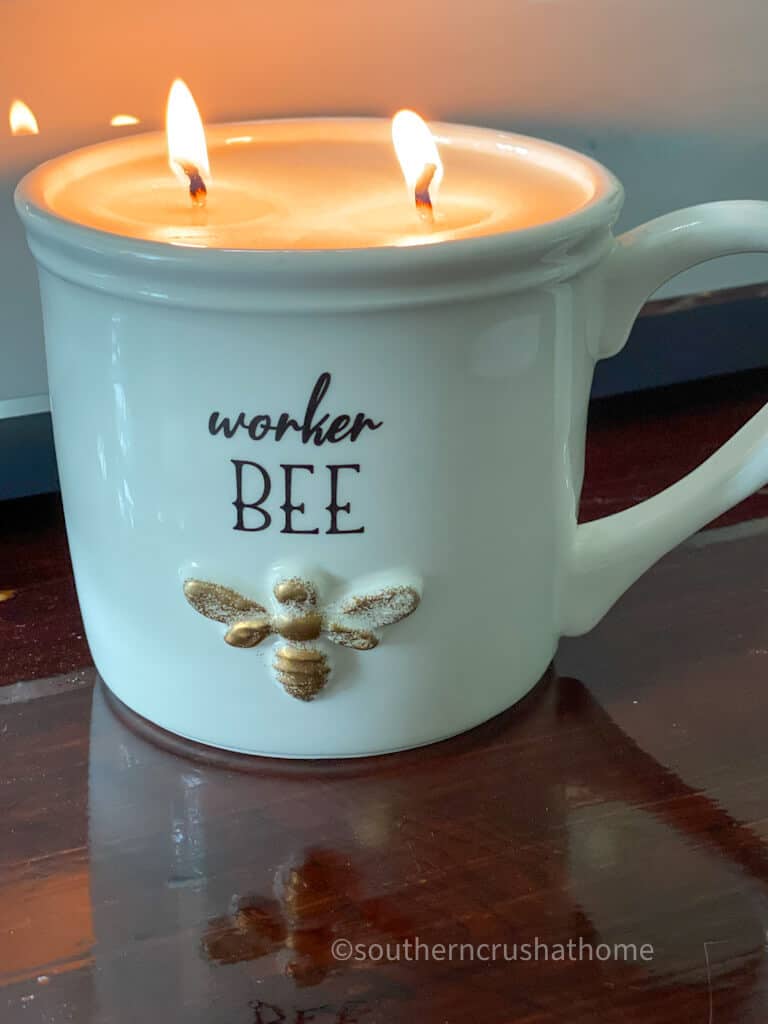
- wooden dough bowls (see my favorites below)
Step 2. Place Your Candle Wicks
Place the wick stickers that come in the candle-making kit to the bottom center of the cotton wicks provided.
Adhere the candle wicks to the bottom of your chosen candle container spacing them out as needed to allow for even burning of the soy wax.
Step 3. Put Centering Devices in Place
Some kits come with chopsticks but they’re not for take-out!
Thread the cotton wicks through the centering devices or chopsticks that this DIY candle-making kit includes as shown.
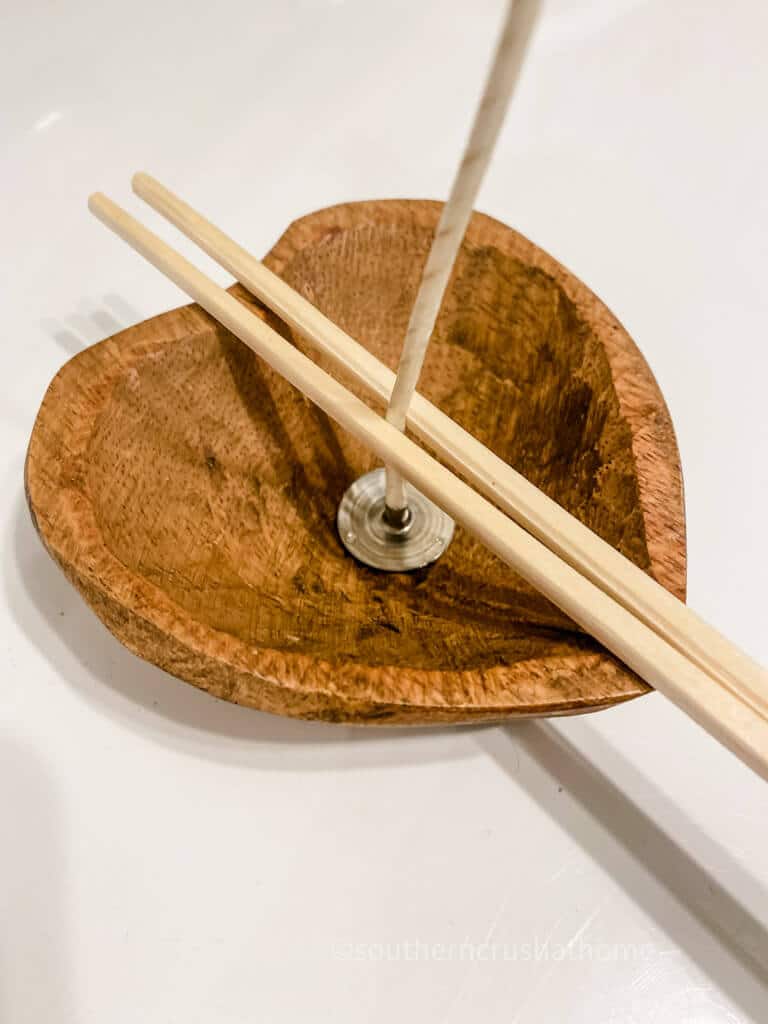
This will keep the wicks in place when the wax is poured.
Step 4. Open up the Envelope of Soy Wax
The natural soy wax will come in a protective bag with a see-through window. This is a fun way to watch the candle wax melting process.
This unique microwave-safe bag that comes with this candle kit allows for heating the wax without the need for using a messy melting pot, stainless steel pouring pot, mixing spoon or stirring sticks.
Simply open the sealed bag at the top so that air can get inside while heating.
Step 5. Heat the Scented Soy Wax
Microwave in 30-second increments until it is melted.
You may want to reseal the bag and maneuver the wax around in the bag after the first 30-second interval in order to disperse the heat evenly.
Re-open the bag and continue heating the soy wax in 30-second intervals.
Step 6. Pour the Soy Wax into Candle Containers
This is the fun part! Carefully pour the soy wax into the chosen containers just below the rim. Don’t be tempted to over-pour your candle.
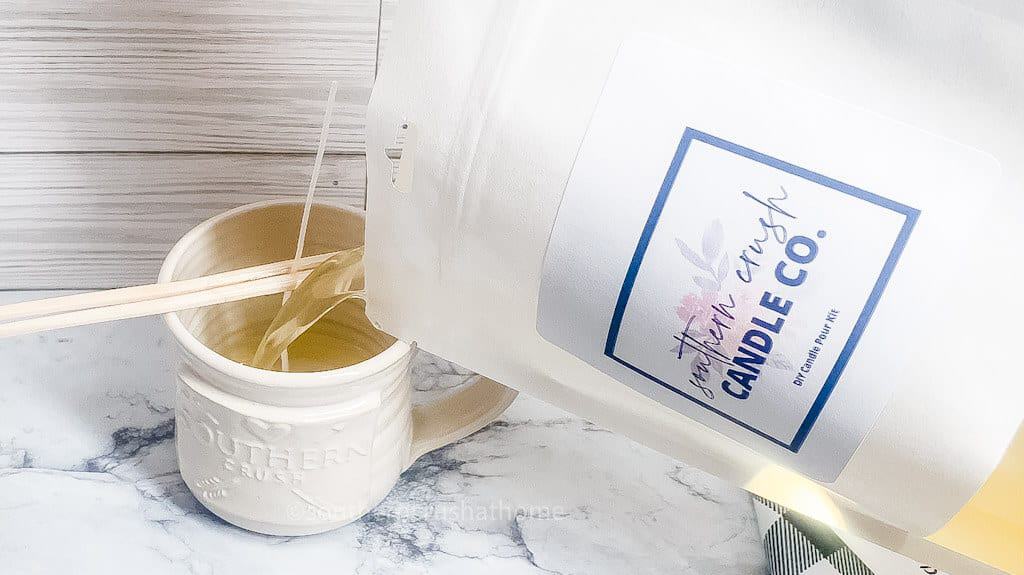
Step 7. Let the Homemade Candle Cure
In order to keep its scent for the optimum amount of time, DIY candles should cure for at least 7 days. It’s tempting to want to light your candle right away, but trust me, it’s worth the wait!
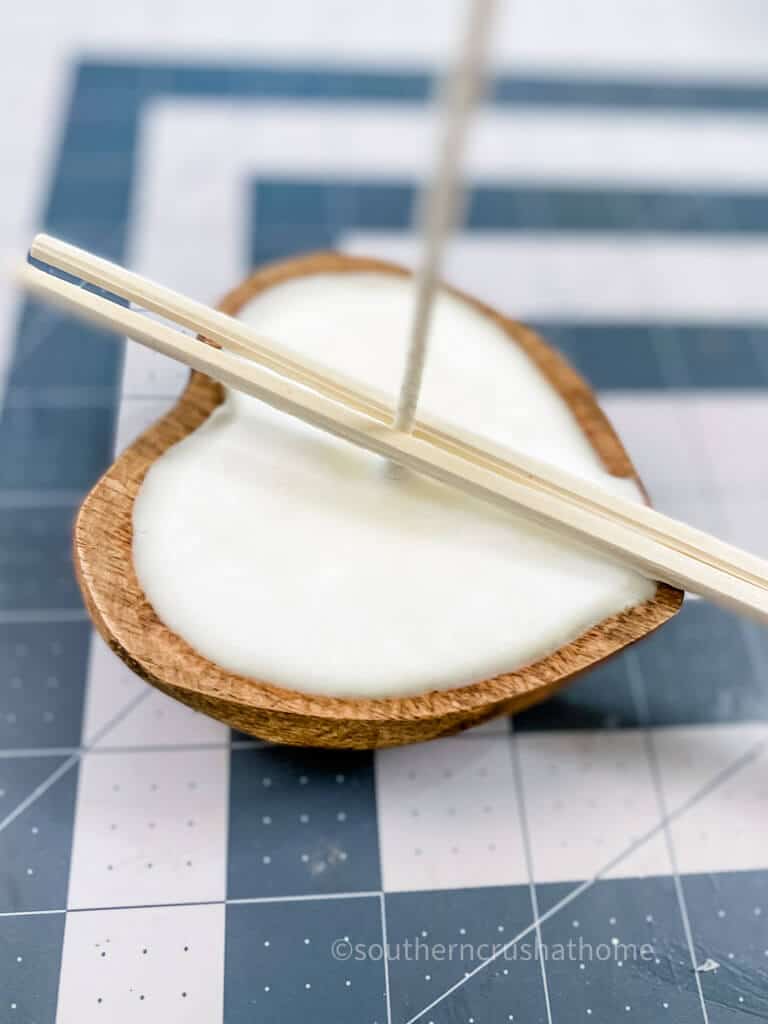
Quick Tip:
If the top of the candle is uneven, heat carefully with a blow dryer until it evens out into a smooth top layer.
Step 8. Trim the Wick
Be sure to trim the candle wick before burning. Only trim down to about a half-inch to avoid what is called tunneling.
Burn your new candle for at least two hours the first time it’s lit to ensure it burns down at an even pace. The melted soy wax ring should go all the way to the outer edges of the candle container.
Easy Homemade Candle-Making Kits for Beginners
Whether you’re a beginner or an experienced candle-maker, this soy wax candle-making kit is sure to have everything you need to make a beautiful, awesome-smelling homemade candle.
What’s your favorite scent for a candle? Will you be ordering one of these easy homemade candle-making kits? Let me know in the comments below!
More Candle DIY Ideas
- How to Make a Resin Tealight Candle Holder
- DIY Candles – How To Transfer Photos To Candles
- How to Make Colored Rice Candle Decor
Glossary Of Terms for Candle Making
A
Additive
A substance blended with wax to enhance its burning qualities or alter its properties. Additives may include vybar, stearic acid, or UV inhibitor to name a few.
Afterglow
The light emitted after removal of an energy source. A wick may tend to “glow” and burn down slightly even after it has been extinguished.
B
Burn rate
The amount of wax consumed per hour in grams. Burn time: The amount of time it takes for the wax in a candle to be consumed completely.
C
Chatter Marks
Horizontal lines or rings that appear because the wax is poured in a cold container or mold, or the wax was poured at too cool of a temperature.
Cold throw
The fragrance emitted from a candle when it is not burning.
Container candle
Any candle poured directly into the container from which it will be burned.
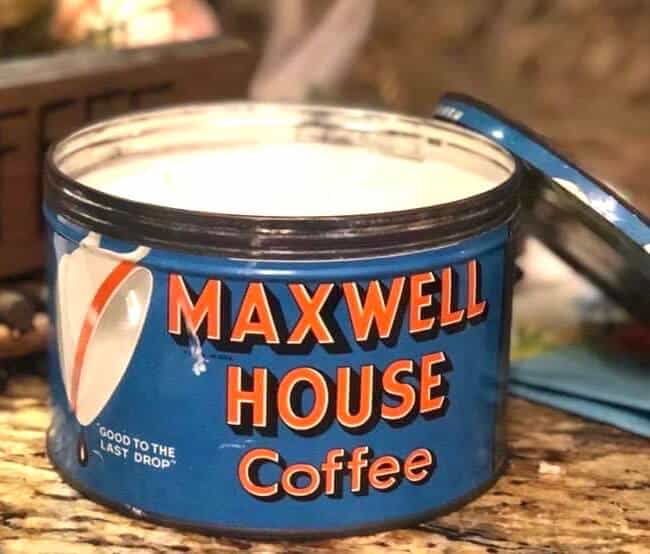
Core
Refers to the interior of a candle. Also used to reference the inner material of a candle wick (may include zinc, cotton, or paper).
Coreless
Used to refer to wicks, this indicates there is no core material.
Cure
To allow a candle to set, or age, to help enhance the fragrance.
D
Diameter
The measurement of a candle, container, or mold at its widest point.
Double boiler
Two nested pans with water in the lower one, designed to allow slow, even heating.
Double scenting
Adding one ounce of fragrance per pound of wax.
Dye
Colorants that are used to give color to wax.
E
Essential oil
An oil derived from a natural substance (plant material, flowers, leaves, wood, grass)
F
Flashpoint
The temperature at which a substance can ignite if it comes in contact with an open flame or spark.
Floater (floating candle)
A shallow candle with a significantly tapered base that will float in water.
Fragrance oil
A blend of synthetic and/or natural components used to create scented oil.
Frosting
A white dusty substance that appears in soy wax candles. It is not harmful and will not affect the burn or scent throw of your candles.
G
Gel Candle
A usually translucent or clear candle that is made from a mineral oil-based product.
H
Hot throw
The fragrance emitted from a candle when it is burning.
Hurricane Candle
An outer shell of wax with a high melt point that may be decorated and is not intended for burning. There will be an inner candle that can be burned and/or replaced.
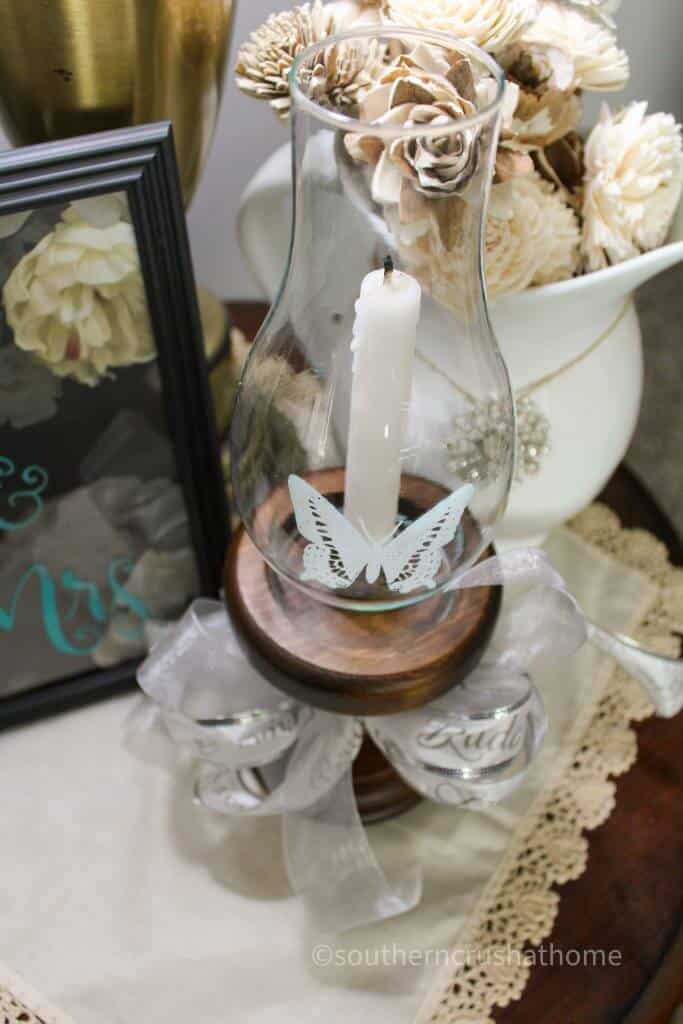
J
Jump lines
See Chatter marks
M
Melt point
The temperature at which wax will start to liquefy.
Melt pool
The wax that liquefies as a candle burns.
Mold
A form used to create a freestanding candle. They are usually made of metal.
Mold plug
Small cone-shaped rubber pieces used to close the hole in the bottom of a mold.
Mold release
An agent used to coat the inside of a mold to make removing the candle easier.
Mold sealer
A clay-like substance used to seal the hole on the bottom of a mold used to block the extra space left around the wick on the outside of the mold.
Mottling
A surface effect in wax that has a snowflake-type appearance.
MSDS (Material Safety Data Sheet)
Product safety information sheets prepared by manufacturers and marketers of products.
Mushrooming
Carbon build up on the tip of a wick after burning.
N
Neck
The vertical shaft of a wick tab that secures the tab to the wick. Lengths of wick tab necks can vary.
O
Opaque
Not transmitting or reflecting light; impenetrable to sight.
Overdip
Coating a finished candle with an alternate wax for color or other effects.
P
Palm wax
A resinous wax made from a wax palm. A clean burning wax that is a natural alternative to paraffin.
Paraffin wax
Made of refined petroleum; most commonly used wax in candle making.
Pillar candle
A candle made in a mold and meant to be free-standing.
Primed
A term used when referring to wicking; meaning coated with wax.
R
Relief holes
Holes poked in candles to release air pockets that can form as the wax cools to prepare for a second pour.
Repour
The action of filling the cavity left after the wax has completely cooled to make the top of the candle level.
S
Scent Load
The amount of fragrance a wax will hold; usually stated in a percentage.
Scent oil
See Fragrance oil
Scent throw
The fragrance emitted by a candle. (See also cold and hot throw)
Second pour
See Repour
Single pour wax
A wax that does not shrink enough to require a second pour.
Sinkhole
A cavity that is formed when a wax hardens and contracts.
Smelly Jelly
Product made from water crystals, used as an air freshener, and not intended to be heated.
Soy wax
An all-natural wax made of soybeans. A clean burning wax that is a natural alternative to paraffin.
Stearic acid
Used to increase opaqueness, slow-burning, and harden wax.
Stuttering
See Chatter marks
Synthetic oil
Fragrance oil that is man-made.
T
Taper
A tall, thin candle that becomes more slender at the burning end. A candleholder must be used with this type of candle.
Tart
A small portion of scented wax used in a tart burner. Can be made in various shapes, but is commonly a 2.5” diameter.
Tart Burner
A device that has a votive or tealight in a lower compartment with an open cupped area on top where a tart can be heated.
Tealight
A small, self-contained candle usually poured into a tin cup measuring approximately 1.5” in diameter and 0.5” tall.
Triple Scent
Adding 1.5 ounces of fragrance per pound of wax.
Tunneling
When a wick does not make a full melt pool in a candle leaving a ring of unmelted wax on the sides.
U
UV stabilizer
An additive used to prevent fading when a candle is exposed to UV rays or fluorescent lighting.
V
Votive candle
A small candle measuring approximately 1.75” diameter and 2” tall and requires burning in a votive holder; designed to liquefy completely
Vybar
A polymer used primarily to aid in fragrance oil retention also increases opacity and enhances color. A modern alternative to stearic acid.
W
Water bath
A container of water used to accelerate the cooling process of a candle; cool water is usually used.
Wet spots
An area where the wax has pulled away from parts of a container leaving spots; a common problem with container candles. Also referred to as delamination.
Wick
Material that delivers fuel to the flame in a candle.
Wick bar
A small metal bar used when making candles to stabilize a wick at the top of a candle
Wick clip assembly
A precut length of wick with a wick tab already crimped in place.
Wick pin
Takes the place of the wick while pouring votive or pillar candles. It is removed when the candle is completely cool, and a wick is inserted in its place.
Wick tab
A flat metal disc with a small hole in the center for a wick; holds the wick at the bottom of a candle.


